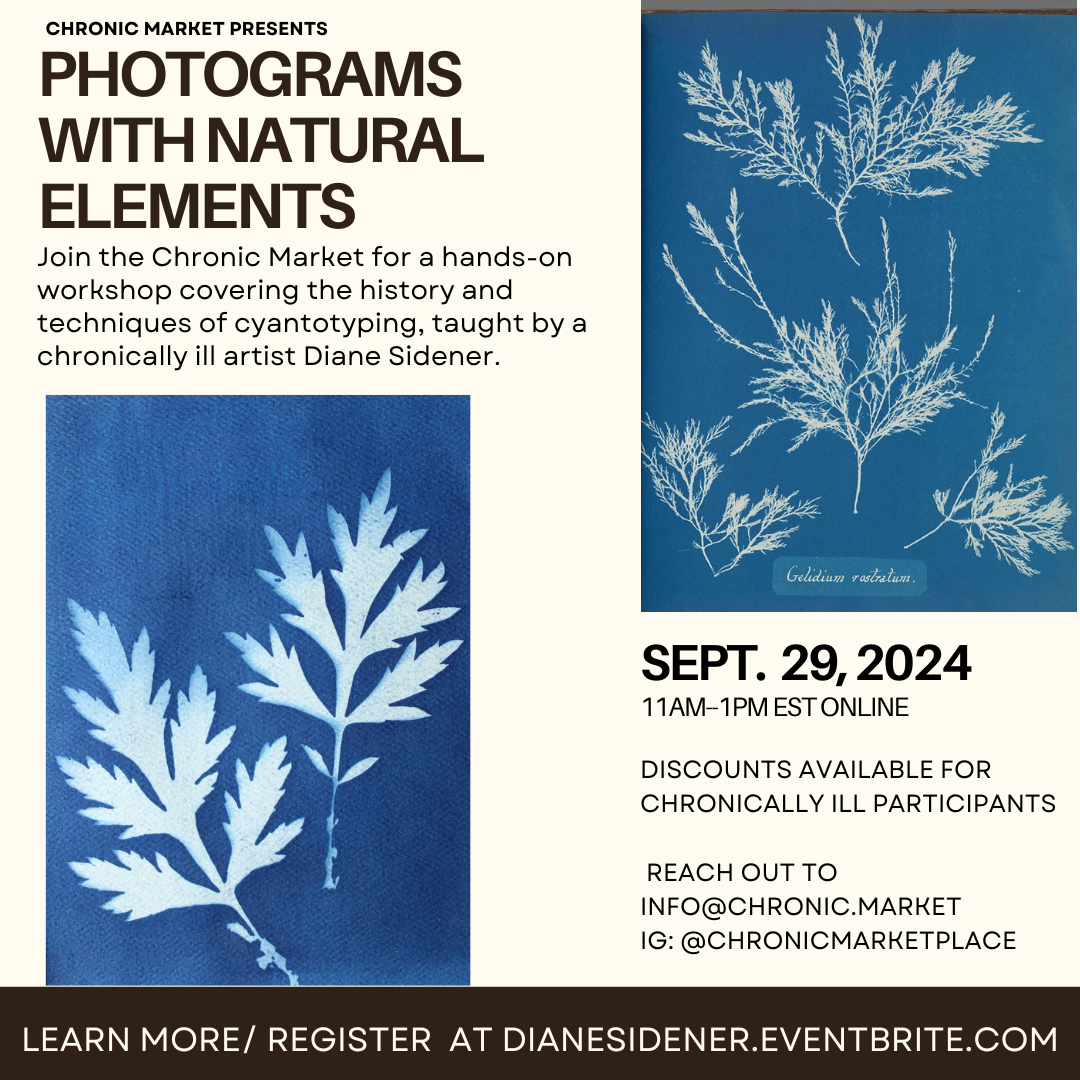Dive into the magical world of cyanotyping, one of the earliest forms of photography, in this hands-on workshop taught by chronically ill artist and Chronic Market participant Diane Sidener!
Explore the art of photograms, creating stunning designs by layering leaves, flowers, and other flat objects directly onto treated paper, exposing them to the sun and rinsing them. Your workshop leader will demonstrate advanced techniques (negatives, additions, toning, light box), with resources for further exploration.
The September 29 workshop will be spoonie-friendly and recorded, so come learn any or all skills at your own pace. Register here (chronically ill participants can reach out for a discount code)!
About the Instructor
Diane Sidener is a folklorist by training, with a long-standing passion for visual arts and material culture, or the things we make by hand. After becoming too sick with ME/CFS to hold a job, she turned her limited energy to her lifelong practices of knitting, sewing, and making jewelry. Her fascination with silk led her to explore Japanese kimono textiles and their intricate techniques, such as shibori (tie-dye), batik (wax-resist dyeing), ikat (tie-dying threads before weaving), paste-resist, and stenciling. Her interest in fabric creation extended to learning various fabric decoration methods, including stitched shibori, eco-printing with plants and leaves, and cyanotyping.
Origins of Cyanotypes
Cyanotypes are one of the earliest forms of photography, invented in 1842, within a few years of black and white photography. Cyanotypes were actually used to print the first published photographs, by botanist Anna Atkins (two of which are just below), in 1843—a huge breakthrough in the dissemination of accurate images, comparable to the15th century revolution brought about by the invention of movable type, since prior to Mrs. Atkins breakthrough woodcuts were the usual method of reproducing images, and they were hardly accurate. Cyanotypes became a popular medium for reproducible images, including blueprints, named for their cyan blue color.

